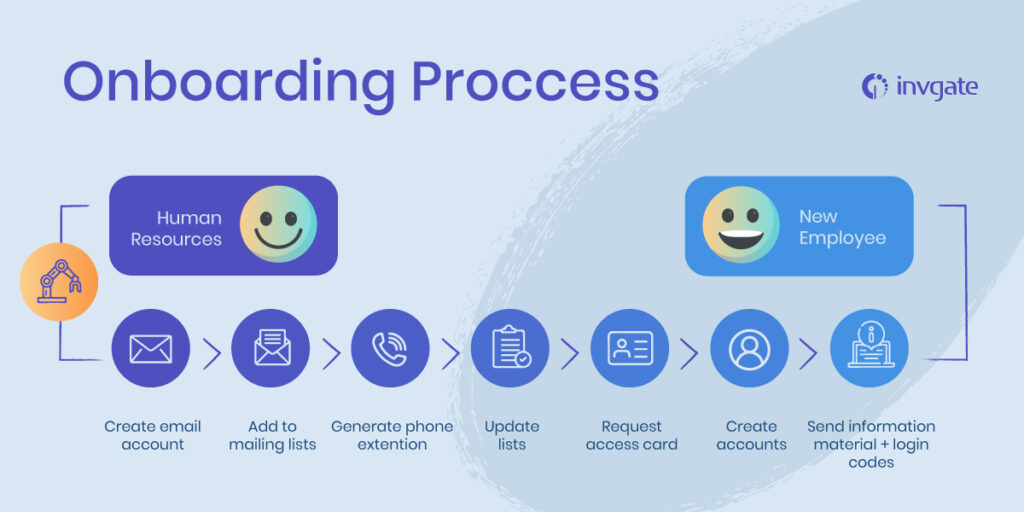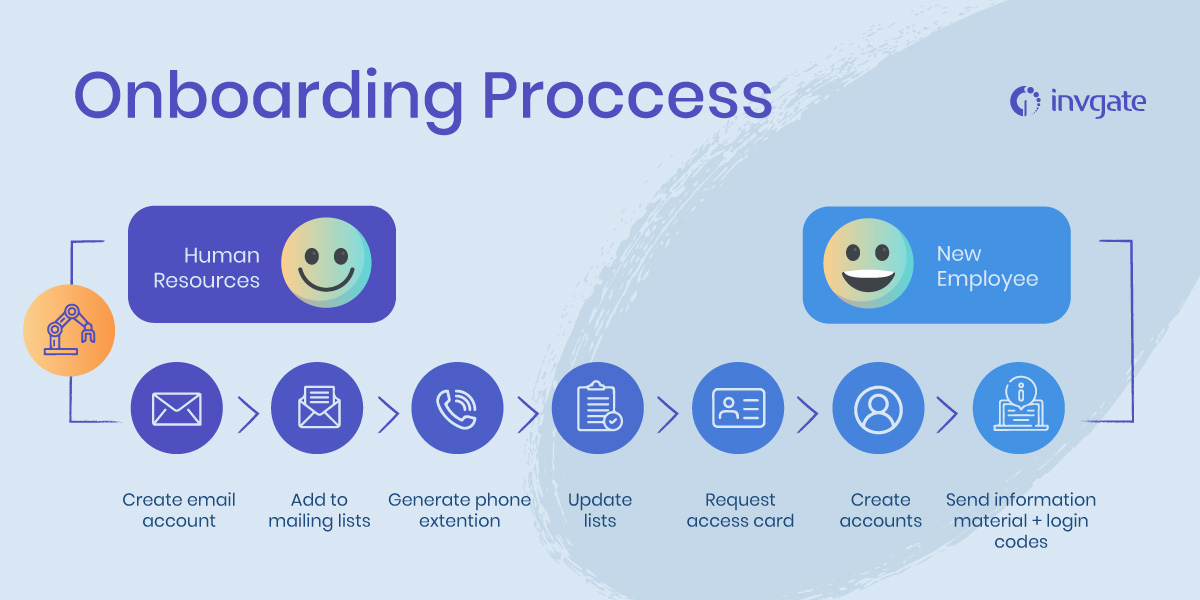
Onboarding an Employee: A Comprehensive Guide to Success
Successfully onboarding an employee is more than just paperwork and introductions; it’s a strategic process that sets the stage for long-term success and retention. A well-structured onboarding program not only equips new hires with the necessary tools and information but also integrates them into the company culture, fostering a sense of belonging and commitment. This guide provides a comprehensive overview of how to effectively onboard an employee, covering key stages, best practices, and essential considerations.
Why Effective Employee Onboarding Matters
The initial days and weeks of a new job are crucial. A positive onboarding experience can significantly impact employee engagement, productivity, and retention. Consider these benefits:
- Increased Productivity: Well-onboarded employees become productive faster. They understand their roles, responsibilities, and how their work contributes to the overall organizational goals.
- Improved Retention: Employees who feel welcomed and supported are more likely to stay with the company. Effective onboarding reduces early turnover, saving the organization time and resources.
- Enhanced Employee Engagement: A structured onboarding process demonstrates that the company values its employees, fostering a sense of belonging and commitment.
- Stronger Company Culture: Onboarding is an opportunity to introduce new hires to the company’s values, mission, and culture, helping them integrate seamlessly into the team.
- Reduced Errors and Misunderstandings: Clear communication and thorough training during onboarding minimize errors and misunderstandings, leading to higher quality work.
Key Stages of the Employee Onboarding Process
Onboarding isn’t a one-day event; it’s a multi-stage process that begins before the employee’s first day and continues for several months. Here’s a breakdown of the key stages:
Pre-Onboarding: Setting the Stage for Success
Pre-onboarding involves all the activities that take place between the offer acceptance and the employee’s first day. This stage is crucial for creating a positive first impression and preparing the employee for a smooth transition.
- Paperwork and Documentation: Collect necessary paperwork electronically to streamline the process.
- Welcome Package: Send a welcome package or email with information about the company, team, and what to expect on the first day.
- Introduction to the Team: Introduce the new hire to their team members via email or a brief virtual meeting.
- Workspace Preparation: Ensure the employee’s workspace is ready with all the necessary equipment and supplies.
First Day: Making a Lasting Impression
The first day sets the tone for the entire onboarding experience. Make it welcoming, informative, and engaging.
- Warm Welcome: Greet the new hire warmly and make them feel comfortable.
- Company Overview: Provide an overview of the company’s mission, values, and goals.
- Team Introductions: Facilitate introductions to key team members and stakeholders.
- Workspace Tour: Give a tour of the office and introduce important facilities.
- Initial Training: Begin initial training on essential tools, systems, and processes.
First Week: Building a Foundation
The first week focuses on providing the new hire with the foundational knowledge and resources they need to succeed.
- Role-Specific Training: Provide in-depth training on the employee’s specific role and responsibilities.
- Company Culture Immersion: Introduce the employee to the company’s culture, values, and norms.
- Goal Setting: Collaborate with the employee to set initial goals and expectations.
- Regular Check-Ins: Schedule regular check-ins with the employee to address any questions or concerns.
- Team Integration Activities: Organize team lunches or activities to foster team bonding.
First Month: Deepening Understanding and Integration
The first month is about deepening the employee’s understanding of their role and the company, as well as integrating them fully into the team.
- Performance Feedback: Provide regular feedback on the employee’s performance and progress.
- Mentorship Program: Assign a mentor to provide guidance and support.
- Cross-Departmental Exposure: Provide opportunities to interact with other departments and learn about their functions.
- Project Involvement: Involve the employee in relevant projects to gain practical experience.
- Continued Training: Offer ongoing training and development opportunities to enhance skills and knowledge.
First Three to Six Months: Ongoing Support and Development
The onboarding process should continue for at least three to six months, providing ongoing support and development to ensure the employee’s long-term success.
- Regular Performance Reviews: Conduct regular performance reviews to assess progress and identify areas for improvement.
- Development Plans: Create individualized development plans to support the employee’s career growth.
- Feedback and Coaching: Provide ongoing feedback and coaching to help the employee reach their full potential.
- Opportunities for Advancement: Identify opportunities for the employee to take on new challenges and responsibilities.
- Continuous Learning: Encourage continuous learning and development through training programs, conferences, and other resources.
Best Practices for Effective Employee Onboarding
To maximize the effectiveness of your onboarding program, consider these best practices:
- Create a Structured Onboarding Plan: Develop a detailed onboarding plan that outlines the key activities and milestones for each stage of the process.
- Use Technology to Streamline the Process: Leverage technology to automate tasks, track progress, and provide employees with access to resources.
- Personalize the Onboarding Experience: Tailor the onboarding experience to the individual employee’s needs and role.
- Provide Clear and Consistent Communication: Communicate clearly and consistently with the employee throughout the onboarding process.
- Gather Feedback and Make Improvements: Regularly gather feedback from new hires and use it to improve your onboarding program.
- Focus on Culture Integration: Emphasize the importance of integrating the employee into the company culture.
- Assign a Buddy or Mentor: Pair the new hire with a buddy or mentor to provide support and guidance.
- Set Clear Expectations: Clearly define the employee’s role, responsibilities, and performance expectations.
- Provide Regular Feedback: Provide regular feedback on the employee’s performance and progress.
- Celebrate Successes: Acknowledge and celebrate the employee’s successes to boost morale and motivation.
Common Onboarding Mistakes to Avoid
Even with the best intentions, organizations can make mistakes during the onboarding process. Here are some common pitfalls to avoid:
- Lack of Structure: Failing to have a structured onboarding plan can lead to confusion and frustration.
- Information Overload: Bombarding new hires with too much information at once can be overwhelming.
- Neglecting Culture Integration: Ignoring the importance of integrating the employee into the company culture can lead to disengagement.
- Poor Communication: Failing to communicate clearly and consistently can create misunderstandings and frustration.
- Lack of Feedback: Not providing regular feedback can leave new hires feeling unsure of their performance.
- Ignoring Individual Needs: Treating all new hires the same, regardless of their individual needs and roles, can be ineffective.
- Neglecting Follow-Up: Failing to follow up with new hires after the initial onboarding period can lead to disengagement and turnover.
Tools and Technologies for Effective Onboarding
Several tools and technologies can help streamline and enhance the onboarding process:
- Onboarding Software: Platforms like BambooHR, Workday, and Talmundo automate tasks, track progress, and provide employees with access to resources.
- Learning Management Systems (LMS): LMS platforms like TalentLMS and Litmos deliver online training and development programs.
- Communication Tools: Tools like Slack, Microsoft Teams, and Zoom facilitate communication and collaboration.
- HR Information Systems (HRIS): HRIS platforms like ADP and SAP SuccessFactors manage employee data and streamline HR processes.
- Project Management Tools: Tools like Asana and Trello help manage onboarding tasks and track progress.
Measuring the Success of Your Onboarding Program
To ensure your onboarding program is effective, it’s important to measure its success. Here are some key metrics to track:
- Retention Rate: Track the percentage of new hires who stay with the company after a certain period (e.g., 6 months, 1 year).
- Time to Productivity: Measure how long it takes for new hires to reach their expected level of productivity.
- Employee Engagement: Assess employee engagement levels through surveys and feedback sessions.
- Onboarding Satisfaction: Gather feedback from new hires about their onboarding experience.
- Performance Metrics: Track key performance indicators (KPIs) to assess the performance of new hires.
Conclusion
Onboarding an employee is a critical investment in the future of your organization. By implementing a structured, engaging, and personalized onboarding program, you can set new hires up for success, improve retention, and foster a thriving company culture. Remember to continuously evaluate and improve your onboarding process to ensure it meets the evolving needs of your organization and its employees. Investing in effective onboarding pays dividends in the form of increased productivity, higher employee engagement, and reduced turnover.
By focusing on the key stages, best practices, and avoiding common mistakes, you can create an onboarding experience that not only welcomes new hires but also empowers them to thrive. Remember that the goal is to integrate them into the company culture, provide them with the tools they need, and set them up for long-term success within your organization. A well-executed onboarding process is a win-win for both the employee and the company.
[See also: Employee Training Programs]
[See also: Remote Employee Onboarding Checklist]

